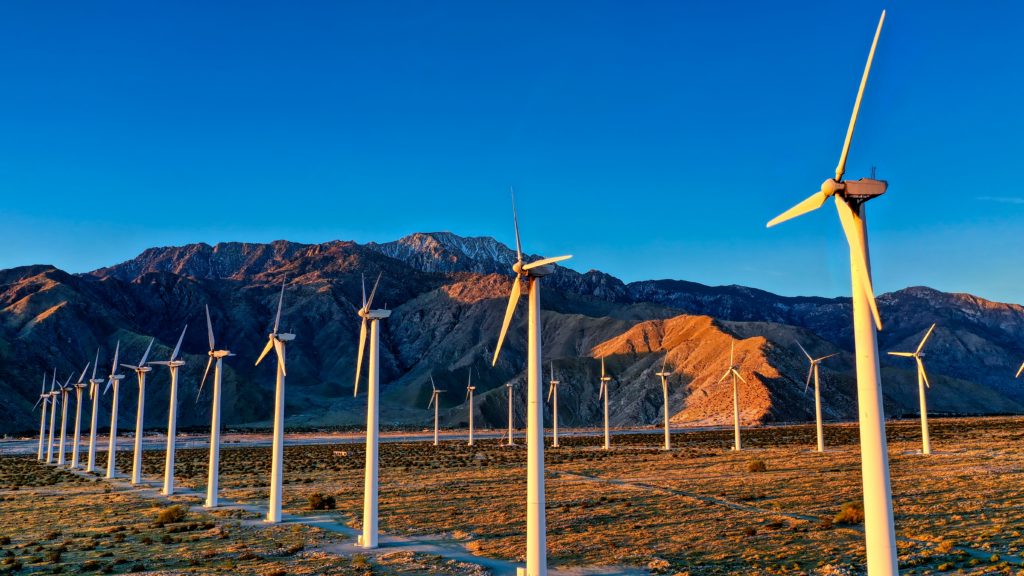
by Peggy Kellen
Many companies today are increasing the ambition of their climate and renewable energy leadership to meet the need for global “net zero” by 2050, in line with the UN Intergovernmental Panel on Climate Change’s (IPCC’s) recommendations. Historically, renewable energy leadership has meant voluntarily purchasing renewable energy beyond what would have otherwise been delivered. As a result, corporate renewable energy targets typically excluded renewable energy delivered by default—as a result of a government policy or an energy provider’s own procurement choices.
But the amount of this non-voluntary “Standard Delivery Renewable Energy” is increasing as new policies require delivery of more clean energy to all customers, and as renewable resources become more cost-effective. This trend, combined with increasingly ambitious renewable and clean energy consumption targets, has raised the question: can a consumer claim their share of delivered renewable energy?
In an effort to address this question, Center for Resource Solutions’ (CRS’s) Clean Energy Accounting Project (CEAP) led a stakeholder process that culminated in the recent publication of Accounting for Standard Delivery Renewable Energy.[1]While this paper focuses on renewable energy, much of the lessons are applicable to any delivered energy resource attribute, including carbon free generation. This report documents the strong consensus that:
Standard Delivery Renewable Energy may be credibly reported by a customer as consumed renewable energy and by a provider as delivered renewable energy when the attributes of the renewable energy are retained or retired on behalf of the customer (or a group including the customer), and other established requirements for credible renewable electricity usage claims are met.
This position is expressly supported by CDP, The Climate Registry, CRS, and RE100. Recent program enhancements have also been made in CDP’s 2021 climate change questionnaire[2]CDP added the option to select “Standard product offering by an energy supplier supported by energy attribute certificates” as an energy sourcing method for Question C8.2e. and RE100’s updated Technical Criteria to recognize credible Standard Delivery Renewable Energy use claims.
While this means it is possible to claim use of Standard Delivery Renewable Energy, leadership recognition programs frequently choose to require that renewable energy consumption used to meet a target satisfy additional criteria, including active and voluntary procurement. A representative survey of such programs can be viewed here.
But how do you measure Standard Delivery Renewable Energy?
Our analysis[3]See Data Sources: Accounting for Standard Delivery Renewable Energy and the Renewable Energy Buyers Association’s Principles of Accounting for Renewable Electricity in the U.S. for more information. shows that the availability and reliability of Standard Delivery Renewable Energy use data is limited, restricting credible claims in practice. When evaluating Standard Delivery data sources, consumers should incorporate the credibility criteria and quality considerations we outline in the report.
There may be additional data challenges to resolve where consumers wish to add Standard Delivery Renewable Energy and voluntary purchases together, for example to consume 100% renewable energy without over procurement. Not only does data need to be credible, but it must also provide information about the mix of generation resources and associated greenhouse gas (GHG) emissions being delivered. GHG emissions by resource type are especially rare in customer disclosures.
Next Steps
The limited number of credible, high-quality data sources available today is a significant barrier to tracking and communicating Standard Delivery Renewable Energy use. This problem will only get larger as new policies are enacted and data-intensive approaches to clean procurement such as Google’s 24/7 Carbon-Free Energy strategy evolve.
Going forward, attention must be focused on developing consistent and transparent methodologies for electricity providers to disclose disaggregated generation resources and GHG emissions information on all delivered electricity. The leading examples of this today include The Climate Registry’s Electric Power Sector Protocol and the Edison Electric Institute’s Electric Company Carbon Emissions and Electricity Mix Reporting Database. Unfortunately, neither were developed with this question in mind and participation in both is currently too limited to effectively serve the US market. Leveraging programs like these, market participants, thought leaders, regulators, and utilities should work collaboratively to develop a consistent methodology for providing disaggregated data to customers. Greater transparency will give consumers confidence that their procurement choices are supporting their sustainability objectives and goals.
About the Clean Energy Accounting Project (CEAP)
The Clean Energy Accounting Project (CEAP) is a new program launched by Center for Resource Solutions in 2020 that develops standardized, stakeholder-reviewed clean energy and GHG emissions accounting guidance and best practices addressing outstanding questions in voluntary and regulatory markets. For more information, visit resource-solutions.org/ceap.
Peggy Kellen is Policy Director at Center for Resource Solutions. She can be reached at peggy.kellen@resource-solutions.org or 415-568-4289.
Photo by Cameron Venti on Unsplash
References
| ↑1 | While this paper focuses on renewable energy, much of the lessons are applicable to any delivered energy resource attribute, including carbon free generation. |
|---|---|
| ↑2 | CDP added the option to select “Standard product offering by an energy supplier supported by energy attribute certificates” as an energy sourcing method for Question C8.2e. |
| ↑3 | See Data Sources: Accounting for Standard Delivery Renewable Energy and the Renewable Energy Buyers Association’s Principles of Accounting for Renewable Electricity in the U.S. for more information. |